-
 Bitcoin
Bitcoin $116900
-1.92% -
 Ethereum
Ethereum $3655
-2.43% -
 XRP
XRP $3.093
-4.38% -
 Tether USDt
Tether USDt $1.000
-0.01% -
 BNB
BNB $776.8
-0.50% -
 Solana
Solana $182.5
-3.18% -
 USDC
USDC $1.000
0.01% -
 Dogecoin
Dogecoin $0.2287
-4.43% -
 TRON
TRON $0.3155
0.17% -
 Cardano
Cardano $0.7984
-2.54% -
 Hyperliquid
Hyperliquid $43.05
0.67% -
 Sui
Sui $3.849
0.16% -
 Stellar
Stellar $0.4215
-2.84% -
 Chainlink
Chainlink $17.83
-3.09% -
 Hedera
Hedera $0.2553
4.41% -
 Bitcoin Cash
Bitcoin Cash $540.3
4.62% -
 Avalanche
Avalanche $23.51
-2.54% -
 Litecoin
Litecoin $111.8
-1.52% -
 UNUS SED LEO
UNUS SED LEO $8.984
0.11% -
 Shiba Inu
Shiba Inu $0.00001370
-1.24% -
 Toncoin
Toncoin $3.145
-0.85% -
 Ethena USDe
Ethena USDe $1.001
-0.04% -
 Polkadot
Polkadot $4.014
-1.63% -
 Uniswap
Uniswap $10.17
-2.84% -
 Monero
Monero $323.8
0.43% -
 Dai
Dai $1.000
0.01% -
 Bitget Token
Bitget Token $4.509
-2.87% -
 Pepe
Pepe $0.00001220
-4.37% -
 Aave
Aave $290.9
-0.67% -
 Cronos
Cronos $0.1286
0.99%
마이닝이 그래픽 카드의 병렬 컴퓨팅 파워에 의존하는 이유는 무엇입니까?
GPUS의 병렬 처리는 cryptocurrency의 복잡한 암호화 퍼즐, CPU를 능가하는 데 탁월합니다. 광업 난이도는 동적으로 조정되어 강력한 하드웨어를 요구하고, ASIC 경쟁에도 불구하고 GPU가 현재 비용 효율성으로 인해 지배적입니다.
2025/03/24 18:56
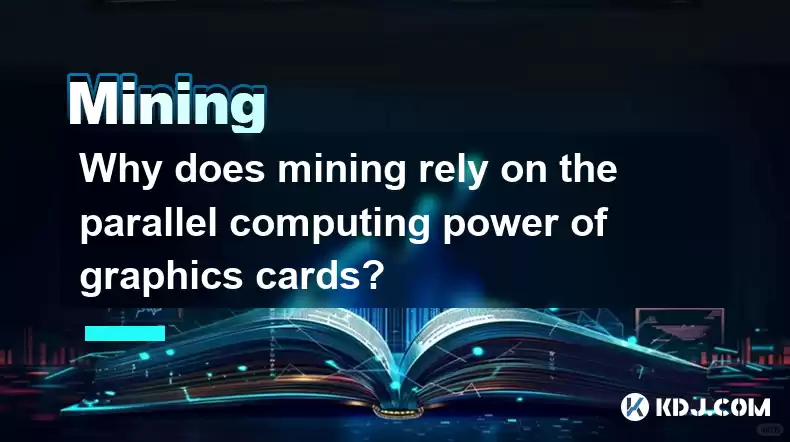
핵심 사항 :
- 그래픽 카드 (GPU)는 병렬 처리에서 탁월합니다. cryptocurrency 마이닝 알고리즘의 중요한 요소입니다.
- GPU의 아키텍처는 CPU와 근본적으로 다르므로 관련된 복잡한 계산에 훨씬 더 효율적입니다.
- 채굴 난이도는 일관된 블록 생성 시간을 유지하기 위해 조정되며, 계속 증가하는 계산 능력이 필요합니다.
- 대체 마이닝 방법이 존재하지만 GPU는 현재 비용 효율성과 성능으로 인해 지배적입니다.
- GPU 마이닝의 미래는 진화 알고리즘과 특수 하드웨어의 출현에 달려 있습니다.
마이닝이 그래픽 카드의 병렬 컴퓨팅 파워에 의존하는 이유는 무엇입니까?
cryptocurrency 마이닝은 핵심으로 계산 집약적 인 프로세스입니다. 목표는 복잡한 암호화 퍼즐을 해결하여 거래를 검증하고 블록 체인에 새로운 블록을 추가하는 것입니다. 이를 위해서는 엄청난 처리 능력이 필요하며, 이곳은 그래픽 카드 (GPU)의 병렬 처리 기능이 매우 중요 해지는 곳입니다.
순차적 처리를 위해 설계된 중앙 처리 장치 (CPU)와 달리 GPU는 병렬 처리를 위해 구축됩니다. 여기에는 문제의 다른 부분에서 동시에 작동 할 수있는 수천 개의 작은 처리 코어가 포함되어 있습니다. 이를 통해 GPU는 CPU보다 훨씬 효율적으로 채굴하는 데 필요한 복잡한 수학적 계산을 다룰 수 있습니다. 이 효율성은 직접 해싱 속도로 직접 해석되어 블록을 성공적으로 채굴하고 보상을받을 가능성이 높아집니다.
Bitcoin 및 Ethereum (병합 이전)과 같은 많은 인기있는 cryptocurrencies에서 사용되는 알고리즘은 계산적으로 요구되도록 특별히 설계되었습니다. 이 알고리즘은 암호화 퍼즐을 해결하기 위해 초당 막대한 양의 계산이 필요합니다. 병렬 처리 아키텍처를 갖춘 GPU는이 워크로드를 처리하는 데 이상적입니다. 많은 계산을 수행하는 능력은 동시에 채굴 과정을 크게 상당히 높입니다.
광업의 어려움은 네트워크에 의해 동적으로 조정되어 일관된 블록 생성 시간을 유지합니다. 더 많은 광부가 네트워크에 합류함에 따라 어려움이 증가하여 퍼즐을 해결하기 위해 더 큰 계산 능력이 필요합니다. 이 증가하는 어려움은 점점 더 강력한 하드웨어를 사용해야하며 GPU는이 기술 무기 경쟁의 최전선에 지속적으로 사용되어 왔습니다. 광부가 달성 할 수있는 해시율이 높을수록 보상을받을 가능성이 높아집니다.
GPU는 현재 cryptocurrency 마이닝에서 지배적이지만 대체 방법을 인정하는 것이 중요합니다. ASICS (Application-Specific Integrated Circuits)는 Cryptocurrency 마이닝을 위해서만 설계된 특수 하드웨어입니다. 그들은 종종 GPU에 비해 우수한 해시 요금을 제공하지만 초기 비용이 높고 다양성 부족은 많은 광부들에게 매력적이지 않습니다. FPGA (Field-Programmable Gate Array)는 또한 어느 정도의 프로그래밍 가능성을 제공하여 다른 알고리즘에 적응할 수 있지만 일반적으로 GPU의 성능 비율과 일치하지 않습니다.
채굴 하드웨어의 선택은 종종 채굴되는 특정 암호 화폐, 사용 된 알고리즘 및 광부 예산과 같은 요소에 따라 다릅니다. ASIC는 종종 가장 강력한 옵션이지만 GPU는 성능과 비용 효율성 사이의 균형을 잘 제공하여 많은 광부에게 인기있는 선택입니다. 암호 화폐 알고리즘의 지속적인 진화와 새로운 하드웨어의 개발은 암호 화폐 마이닝의 풍경을 계속 형성 할 것입니다.
일반적인 질문과 답변 :
Q : CPU를 사용하여 cryptocurrency를 채굴 할 수 있습니까?
A : 그렇습니다. CPU를 사용하여 cryptocurrency를 채굴 할 수 있지만 일반적으로 수익성있는 노력은 아닙니다. CPU는 GPU의 병렬 처리 능력이 부족하여 해시 비율이 상당히 낮아서 보상을 얻을 가능성이 낮아집니다. 전기 비용은 종종 잠재적 이익보다 중요합니다.
Q : GPU 마이닝과 ASIC 채굴의 차이점은 무엇입니까?
A : GPU 마이닝은 그래픽 카드를 사용하여 성능 및 비용 효율성의 균형을 제공하지만 특정 알고리즘으로 제한됩니다. ASIC Mining은 애플리케이션 별 통합 회로를 사용하여 우수한 해시 속도를 제공하지만 비싸고 융통성이 없으며 단일 알고리즘에만 적합합니다.
Q : 어려움 조정은 GPU 채굴에 어떤 영향을 미칩니 까?
A : 더 많은 광부가 네트워크에 가입하고 총 해싱 파워가 증가함에 따라 암호화 퍼즐을 해결하기가 어렵다는 점은 일관된 블록 생성 시간을 유지하기 위해 상향 조정됩니다. 이를 위해서는 경쟁력을 유지하려면 더 강력한 GPU 또는 더 많은 수의 GPU가 필요합니다.
Q : GPU 및 ASICS를위한 ASIC 외에 다른 하드웨어 옵션이 있습니까?
A : 예, FPGA (필드 프로그래밍 가능한 게이트 어레이)는 어느 정도의 프로그래밍 가능성을 제공하여 다른 알고리즘에 적응할 수 있습니다. 그러나 성능은 일반적으로 GPU와 ASIC에 미치지 못합니다. 다른 특수 하드웨어 솔루션은 지속적으로 탐구되고 있지만 광범위한 채택을 달성하지 못했습니다.
Q : GPU 채굴의 수익성을 결정하는 요인은 무엇입니까?
A : 수익성은 cryptocurrency의 가격, 채굴 난이도, 전기 비용, GPU의 해시 요금 및 채굴 풀 수수료를 포함한 여러 요인에 따라 달라집니다. 높은 가격, 낮은 난이도, 낮은 전기 비용, 높은 해시율 및 낮은 수수료는 모두 수익성에 도움이됩니다.
Q : GPU 채굴은 환경 친화적입니까?
A : GPU 마이닝은 모든 cryptocurrency 마이닝과 마찬가지로 상당한 양의 전기를 소비하여 환경 문제를 제기합니다. 환경 영향은 사용 된 에너지 원과 채굴 작업의 효율성에 달려 있습니다. 많은 광부 들이이 영향을 완화하기 위해 녹색 에너지 원을 탐색하고 있습니다.
Q : GPU 채굴의 미래는 무엇입니까?
A : GPU 채굴의 미래는 불확실합니다. 새로운 알고리즘의 개발과 더 전문화 된 하드웨어의 출현은 암호 화폐 마이닝에서 GPU의 역할을 잠재적으로 감소시킬 수 있습니다. 그러나 GPU는 덜 인기있는 cryptocurrencies 또는 ASIC에 적합한 알고리즘을 가진 채굴을위한 관련 옵션으로 남아있을 것입니다.
부인 성명:info@kdj.com
제공된 정보는 거래 조언이 아닙니다. kdj.com은 이 기사에 제공된 정보를 기반으로 이루어진 투자에 대해 어떠한 책임도 지지 않습니다. 암호화폐는 변동성이 매우 높으므로 철저한 조사 후 신중하게 투자하는 것이 좋습니다!
본 웹사이트에 사용된 내용이 귀하의 저작권을 침해한다고 판단되는 경우, 즉시 당사(info@kdj.com)로 연락주시면 즉시 삭제하도록 하겠습니다.
- UAE의 디지털 자산 혁명 : Stablecoin 규정이 중심에 있습니다
- 2025-07-26 10:40:11
- Virtual Weekly Drop : 복구 분석 및 개인 정보 푸시
- 2025-07-26 08:50:11
- Bitcoin, Cynthia Lummis 및 Freedom Money : New Yorker 's Take
- 2025-07-26 08:30:11
- Pudgy Penguins, Crypto Price 및 Altseason Buzz : 과대 광고는 무엇입니까?
- 2025-07-26 10:51:48
- Crypto Gainers, Top 10, 30 주 : Altcoins Buck the Trend
- 2025-07-26 08:55:12
- Solana, Altcoins 및 Coinbase : Buzz는 무엇입니까?
- 2025-07-26 06:30:12
관련 지식
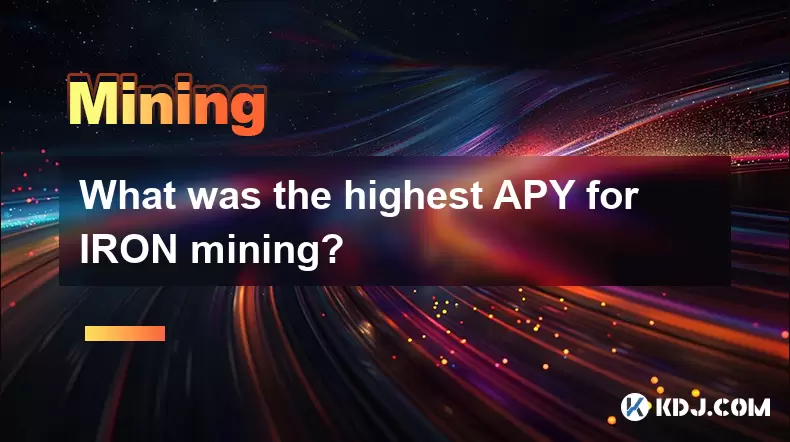
철 채굴의 가장 높은 Apy는 무엇입니까?
2025-07-23 05:14:36
철 토큰과 채굴 메커니즘을 이해합니다 Iron Token 은 철제 금융 생태계 내에서 작동하는 스타블 레코 인이며, 주로 Polygon 및 Binance Smart Chain과 같은 블록 체인 네트워크에서 작동합니다. 그것은 부분 담보 모델을 통해 미국 달러로 1 : ...

철 풀에서 불완전한 손실은 무엇입니까?
2025-07-23 09:00:41
철 풀의 맥락에서 불완전한 손실을 이해합니다 불완전한 손실은 분산 금융 (DEFI) 플랫폼, 특히 자동화 된 시장 제조업체 (AMM) 모델을 사용하는 유동성 제공 업체에 영향을 미치는 현상입니다. 철제 금융 생태계 의 일부인 철 풀의 맥락에서, 유동성 풀에 추가 된 후...
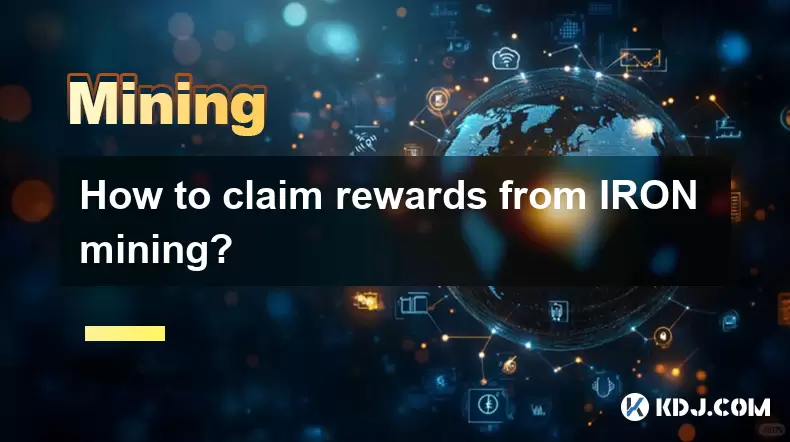
철 채굴로부터 보상을 청구하는 방법?
2025-07-23 14:21:39
철 채굴 및 보상 메커니즘 이해 Iron Finance는 다각형 및 Binance 스마트 체인 네트워크에서 분산 된 금융 (Defi) 프로토콜로 운영되어 철 및 타이탄 으로 구성된 이중 토로 시스템을 도입했습니다. 이 프로토콜을 통해 사용자는 지정된 풀에 자산을 제공하...
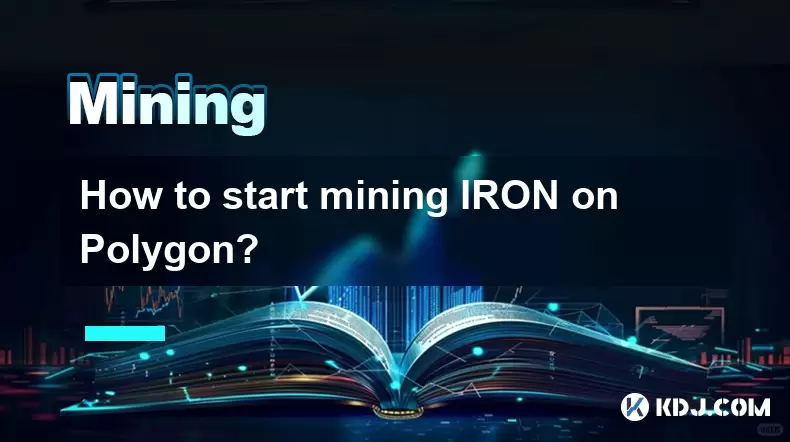
다각형에서 철분을 채굴하는 방법?
2025-07-23 20:00:37
철분과 다각형에 대한 역할을 이해합니다 철은 미국 달러로 1 : 1 페그를 유지하도록 설계된 분산 된 알고리즘 스타블 코인입니다. 다각형 (이전의 Matic Network)을 포함한 여러 블록 체인 네트워크에서 운영되며, 이는 낮은 트랜잭션 수수료와 높은 처리량을 제공...
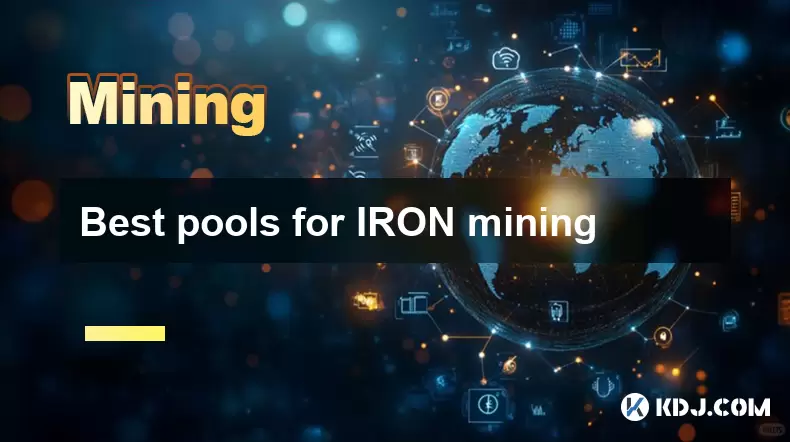
철 채굴을위한 최고의 수영장
2025-07-26 03:56:42
철 채굴 및 독특한 메커니즘을 이해합니다 Iron (Iron Finance)은 다중 체인 알고리즘 스타블 레코 인 생태계를 만드는 것을 목표로하는 분산 금융 (DEFI) 프로젝트였습니다. 은행 운영으로 인해 20121 년 중반에 원래 철 토큰이 무너졌지만, 이후 다양한...
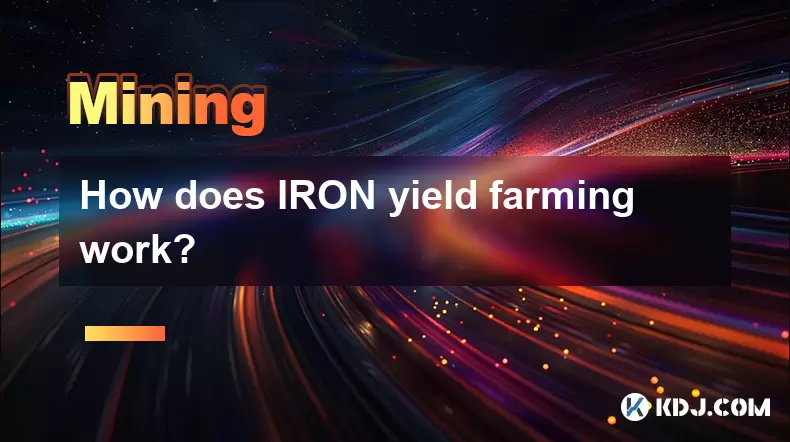
아이언은 어떻게 농업을 생산합니까?
2025-07-23 22:14:36
철률 농업 및 핵심 메커니즘을 이해합니다 철 생산량 농업은 블록 체인 플랫폼의 특정 토큰 풀에 유동성을 제공함으로써 사용자가 보상을받을 수있는 분산 된 금융 (DEFI) 전략입니다. Iron Token 은 일반적으로 Iron Finance Ecosystem과 관련이 있...

철 채굴의 가장 높은 Apy는 무엇입니까?
2025-07-23 05:14:36
철 토큰과 채굴 메커니즘을 이해합니다 Iron Token 은 철제 금융 생태계 내에서 작동하는 스타블 레코 인이며, 주로 Polygon 및 Binance Smart Chain과 같은 블록 체인 네트워크에서 작동합니다. 그것은 부분 담보 모델을 통해 미국 달러로 1 : ...

철 풀에서 불완전한 손실은 무엇입니까?
2025-07-23 09:00:41
철 풀의 맥락에서 불완전한 손실을 이해합니다 불완전한 손실은 분산 금융 (DEFI) 플랫폼, 특히 자동화 된 시장 제조업체 (AMM) 모델을 사용하는 유동성 제공 업체에 영향을 미치는 현상입니다. 철제 금융 생태계 의 일부인 철 풀의 맥락에서, 유동성 풀에 추가 된 후...

철 채굴로부터 보상을 청구하는 방법?
2025-07-23 14:21:39
철 채굴 및 보상 메커니즘 이해 Iron Finance는 다각형 및 Binance 스마트 체인 네트워크에서 분산 된 금융 (Defi) 프로토콜로 운영되어 철 및 타이탄 으로 구성된 이중 토로 시스템을 도입했습니다. 이 프로토콜을 통해 사용자는 지정된 풀에 자산을 제공하...

다각형에서 철분을 채굴하는 방법?
2025-07-23 20:00:37
철분과 다각형에 대한 역할을 이해합니다 철은 미국 달러로 1 : 1 페그를 유지하도록 설계된 분산 된 알고리즘 스타블 코인입니다. 다각형 (이전의 Matic Network)을 포함한 여러 블록 체인 네트워크에서 운영되며, 이는 낮은 트랜잭션 수수료와 높은 처리량을 제공...

철 채굴을위한 최고의 수영장
2025-07-26 03:56:42
철 채굴 및 독특한 메커니즘을 이해합니다 Iron (Iron Finance)은 다중 체인 알고리즘 스타블 레코 인 생태계를 만드는 것을 목표로하는 분산 금융 (DEFI) 프로젝트였습니다. 은행 운영으로 인해 20121 년 중반에 원래 철 토큰이 무너졌지만, 이후 다양한...

아이언은 어떻게 농업을 생산합니까?
2025-07-23 22:14:36
철률 농업 및 핵심 메커니즘을 이해합니다 철 생산량 농업은 블록 체인 플랫폼의 특정 토큰 풀에 유동성을 제공함으로써 사용자가 보상을받을 수있는 분산 된 금융 (DEFI) 전략입니다. Iron Token 은 일반적으로 Iron Finance Ecosystem과 관련이 있...
모든 기사 보기

























































































